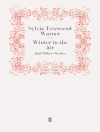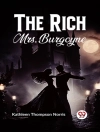In ‘The Woman in White, ‘ Wilkie Collins weaves a complex narrative that combines elements of mystery, gothic fiction, and social commentary against the backdrop of Victorian England. The novel employs a multi-voiced epistolary structure, allowing readers to immerse themselves in the perspectives of various characters as they navigate themes of identity, madness, and the plight of women in a patriarchal society. The illustrated edition enriches the reading experience by offering visual interpretations of key scenes, enhancing the gripping atmosphere and emotional resonance of the plot. Wilkie Collins, a contemporary and close associate of Charles Dickens, was a pioneer in the detective genre, deeply influenced by his own experiences with the intricate social dynamics and legal injustices of the time. His fascination with psychological depth and moral ambiguity is evident in this work, as he explores the lives of marginalized women and men ensnared by societal expectations. Collins’s background as a legal practitioner provides a profound understanding of the thematic complexities embodied in ‘The Woman in White.’ This compelling gothic tale is a must-read for those who appreciate rich character development and intricate plotting. Collins’s incisive commentary on gender dynamics and the legal system invites readers to reflect on the enduring issues of authority and autonomy. Engaging and thought-provoking, ‘The Woman in White’ remains a seminal work that continues to resonate with audiences today.
A propos de l’auteur
William Wilkie Collins (1824-1889) was an eminent English writer preeminent in the genre of mystery and early detective fiction. His opus includes groundbreaking novels such as ‘The Woman in White’ and ‘The Moonstone’, which both have been regarded as pinnacles of the sensation novel genre, a type of literature that combines the intrigue of Gothic fiction with the realist narrative style. ‘The Woman in White’, an illustrated version retaining Collins’s original textual richness, adeptly interweaves themes of identity, deception, and the plight of women within Victorian society. Collins, a close contemporary and friend of Charles Dickens, shared serial publication platforms, contributing to the expansion of the 19th-century literary landscape. His narratives are characterized by an intricate plot construction, engaging readers through layered storytelling and a deep psychological portrayal of characters. Collins’s literary style often embraced the epistolary form, as seen in ‘The Woman in White’, which lent his tales a sense of immediacy and authenticity. Despite confronting chronic pain and opium dependency later in life, he continued to write, leaving behind a substantial body of work that continues to resonate with readers and has cemented his position as a key figure in the development of the mystery genre.












